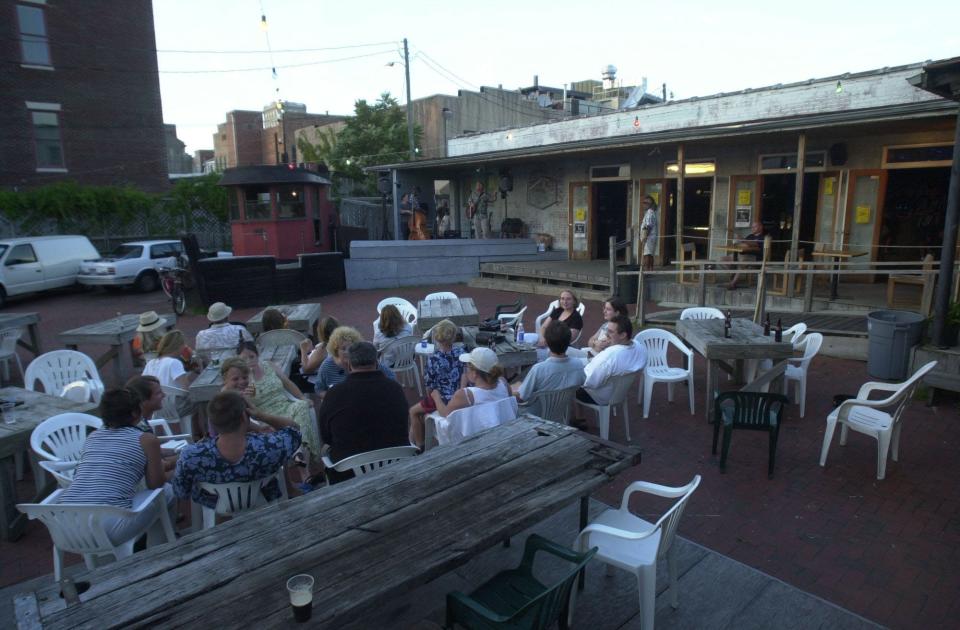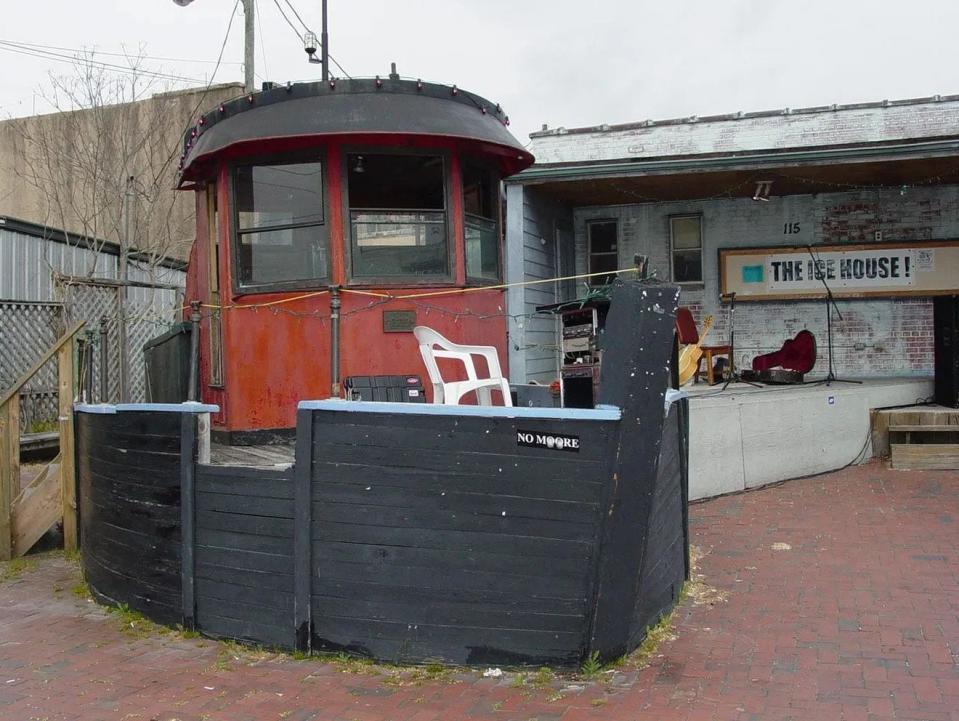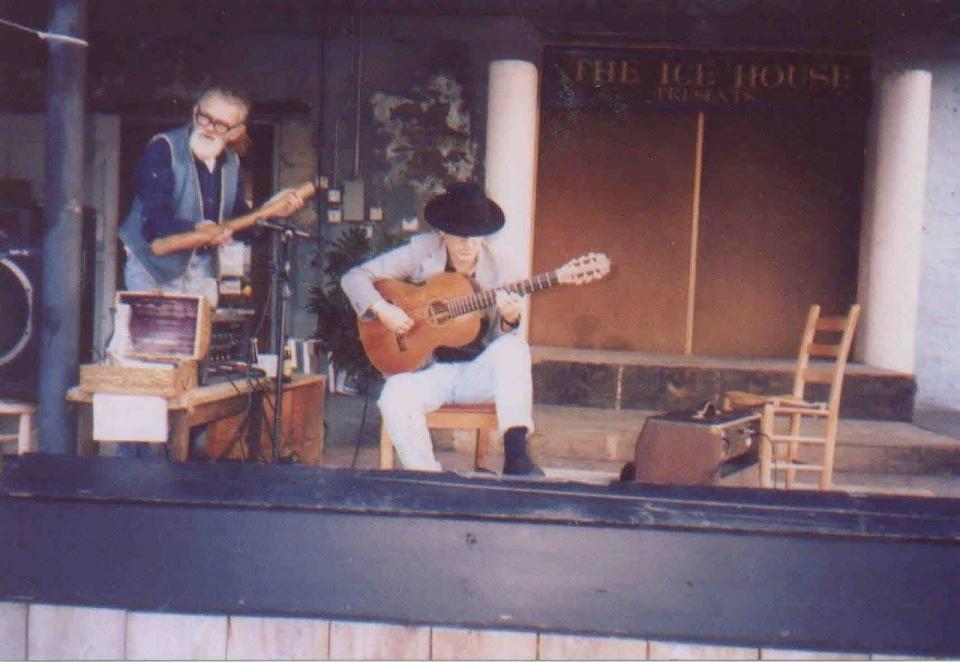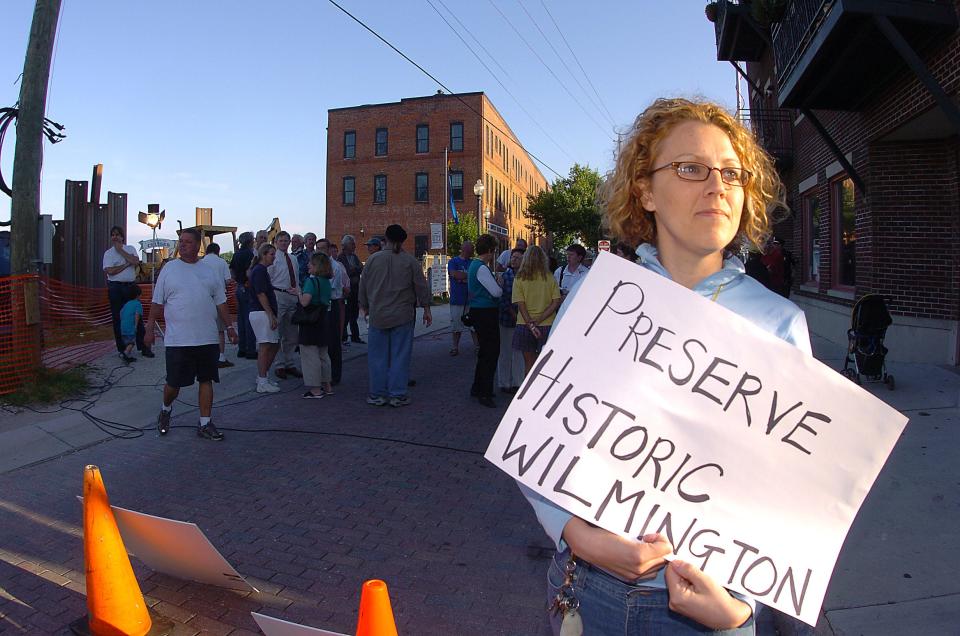20 years ago this spring, an iconic downtown Wilmington bar and music venue bit the dust
Twenty years ago, a Wilmington institution bit the dust.
Less than a month after holding a farewell shindig in late March of 2004, the old IceHouse bar and music venue at 115 S. Water St. — a historic former ice house building that might've dated to the 1830s, as well as an adjoining structure built in 1960 — was partially torn down in the early morning hours of April 26. The rest of the structure came down in 2005.
For many, the razing marked the end of an era, an end to the good music and good times that flowed from the indoor/outdoor riverfront venue for more than decade.
"Like Joni Mitchell sang, they paved paradise and put up a parking lot. Which is exactly what it is some 20 years later," said Mike Raab, whose short documentary with Patrick Ogelvie, "The IceHouse: A Legendary Landmark Lost," was awarded a 2019 Preservation Award of Merit from the Historic Wilmington Foundation.
According to a StarNews story from 2001, written when it was thought the IceHouse might close for good (it hung on for another two and half years), Joe Carney, who died Feb. 10 at the age of 69, Jim Bath, who died in 2014, and Fred Perkins opened the venue Oct. 6, 1990, on the weekend of Wilmington's annual Riverfest celebration. Perkins bowed out after a few months, leaving Carney and Bath as the faces of the establishment.
Arthur Shuey, a former Wilmington musician now living in Savannah, Georgia, said he played the first-ever show at the IceHouse, sitting in with David Schartman's indelicately named jazz and blues band The Electro-Cosmic Orgasm, or ECO.

Jim Bath obituary: Musicians plan tribute to longtime bar owner, promoter of music scene
Shuey said many downtown denizens in 1990 thought the IceHouse owners were crazy for opening a bar at the end of the summer season. But the IceHouse was a near-immediate hit with both local musicians and bargoers. This was the so-called "golden age" of the IceHouse, from about '91 to 1995, say those who were around at the time.
Carney sold his share of the bar in 1997. Bath stayed on for a few years to help run the place with Dawn and Karl Tutt and Frank Greathouse. The bar's owner when it closed was Stacey Harrell.
"We had $80,000 or more a year music budget for those seven years (1990-1997) and charged not one dime in cover," Carney told the StarNews in 2001.
"He was an articulate man," Shuey said of Carney, adding that he would organize volunteers "to clean trash and broken glass out of downtown gutters on Sunday mornings so that the community would not think live music was any sort of detriment or draw for hoodlums."

An 'eccentric' clientele
The venue was known for its large brick patio facing the Cape Fear River, a patio that would invariably be packed during nice weather. Music was played on a variety of stages, both indoors and out. The original outdoor stage faced north but was later moved to face the river.
A centerpiece of the patio was an old tugboat that sometimes served as an extra bar during busy times and would become immortalized in the Wilmington-shot show "Dawson's Creek." (The IceHouse was where characters played by Katie Holmes and Wilmington actress Nina Repeta worked. The IceHouse can also be seen in the 1995 film "Empire Records.")
More: 11 iconic Wilmington locations that earned a spotlight in film and TV productions

"Jim Bath acquired (the tugboat) by way of his side salvage business and had it dragged onto the property and put in place," Shuey said. "By happy coincidence, a fellow who'd captained it in New York Harbor in the '50s turned up at the IceHouse one day. Jim was on clouds for a month."
Live music was a major attraction, mostly blues and jazz, with some rock mixed in as well. Radio station WAAV even broadcasted live from the IceHouse stage every Saturday for a time.
"Many of the musicians who played at the IceHouse are still making music today," Raab said, citing such well-known local names as Laura McLean, Lan Nichols, Nel Moore Nichols, Gary Allen and Benny Hill. Blues legend Taj Mahal even held court there at least once, playing on the IceHouse's resident piano when in town shooting 1995 film "When We Were Colored."

Other musicians who played there regularly, including flamenco guitarist and Wilmington legend William "Paco" Strickland, have passed on.
"The draw was the environment," Shuey said. "Live entertainment was still a special treat for us in those days, and people went out to see live bands and sometimes accidentally got drunk, whereas today the reverse is too often the case."
Shuey described the bar's clientele as "eccentric artists, lawyers, eccentric non-artists, ministers, various heathens, musicians from the whole spectrum of genres and the rest of the spectrum of our eclectic downtown of that epoch," along with "a background chorus of visitors from outside Wilmington looking around, enjoying the vibe."
What happened?
Several factors are often cited in the downfall of the IceHouse, including a reviled, turn-of-the-century noise ordinance that brought not only occasional fines but also a general dampening of spirits.
"I think when the noise ordinance stuff started, that took the wind out of a lot of people’s sails," original IceHouse bartender Eva Vontz told the StarNews in 2001.
Others cited more competition for business downtown, a series of destructive hurricanes in the mid- and late '90s and even a scene from "Dawson's Creek" that showed the bar burning down, causing some to believe it was no longer in business.
"A lot of little things have put a dagger in the heart of the IceHouse," Paco Strickland told the StarNews in 2001.
An early 2000s push to save the IceHouse as a structure, if not as a venue, played the historic preservation card, but to no avail. Librarian and historian Beverly Tetterton told the StarNews in 2002 that she had maps showing that the original ice house building was there for sure in 1881 and might've dated to as early as 1838.
In 2004, former StarNews reporter Amy Hotz wrote in a column that "this building is one of only a few left that bears witness to Wilmington's true industrial waterfront."
Dave Nathans, who owned the buildings when they were torn down, acknowledged to the StarNews in 2004 that it was "a historical issue for sure" but that "architecturally, I think there is very little architectural significance."
When the building finally did come down on April 26, 2004, a crowd assembled to see her off, some holding signs of protest.

In terms of vibe, the closest thing to the old IceHouse in Wilmington now is probably the Rusty Nail on North Fifth Avenue, which hosts a similar style of blues music, albeit in dive-ier environs. Notably, the Nail has a painting of Bath hanging on one of its walls. Rusty Nail owner Sandy Williams has credited Bath, who helped start the still-active Cape Fear Blues Society with Shuey and others at the IceHouse in the early 1990s, with moving its weekly jam to the Nail some two-plus decades ago.
Past attempts to develop the lot where the IceHouse once stood, most recently in 2022, have called for housing or for a mixed-use development of housing and businesses. The lot, currently owned by 115-117 South Water LLC, has sat vacant going on 20 years now. One day, something will be built there.
Even as losing the IceHouse 20 years ago was the end of an era, however, it also sparked the beginning of a new era in Wilmington, one in which some see the venue's continuing influence.
"What had been sort of a shopping district, sort of a business district, sort of this and sort of that was now irrefutably launched toward being, for better or worse, a clearly identifiable entertainment district," Shuey wrote in a 2009 ode to the IceHouse. "Hundreds of hospitality industry jobs have been created since the downtown entertainment boom began. All of those pluses went into high gear thanks to the IceHouse."
This article originally appeared on Wilmington StarNews: Downtown Wilmington, NC's IceHouse bar was torn down 20 years ago

